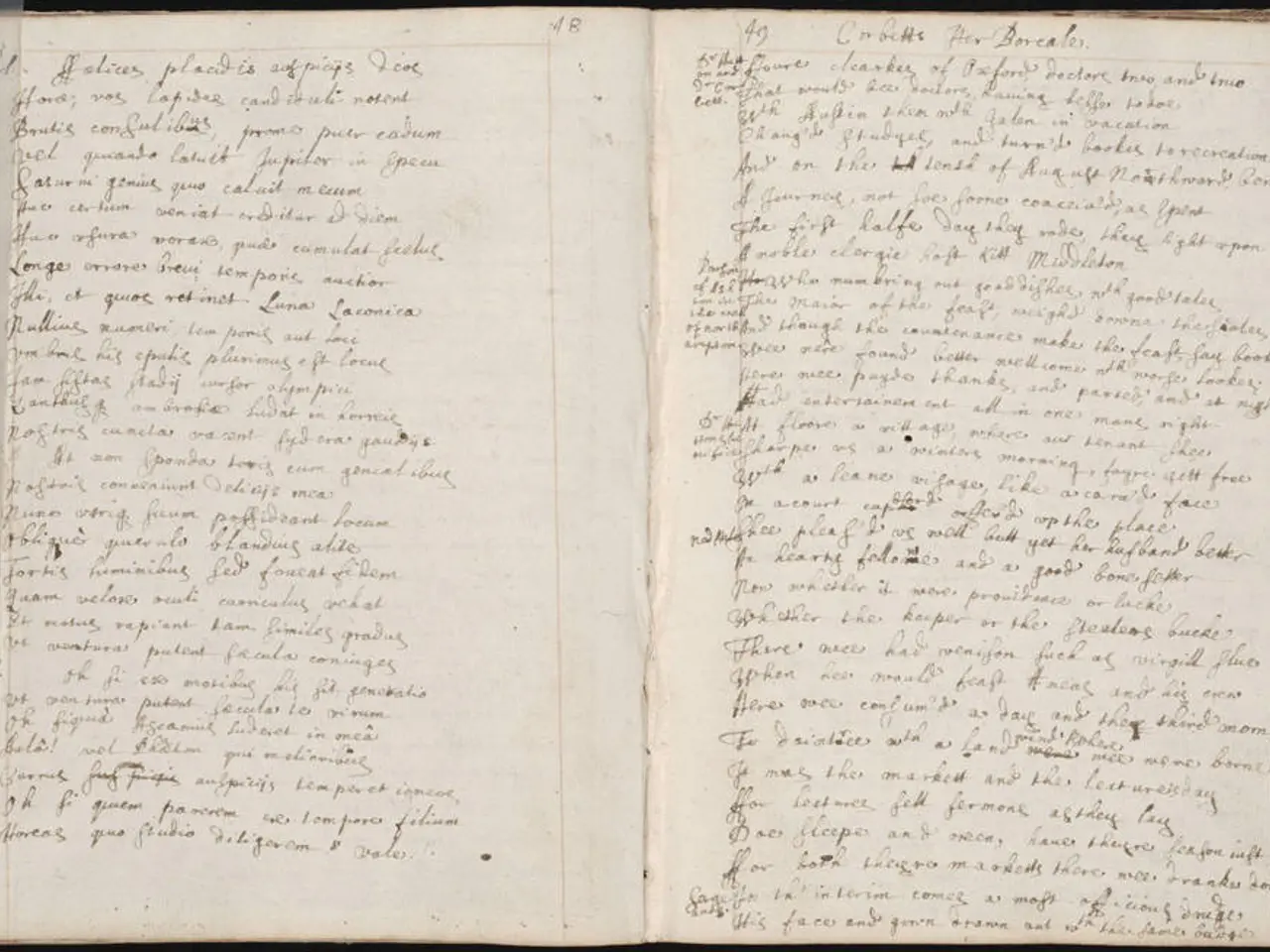A Tutorial on Knocking Holes in Your Novel: A Guide to Applying Developmental Edits
Mastering Developmental Edits: A Step-by-Step Guide for Newcomers
Are you struggling to figure out how to apply developmental edits? It's like building a grand, medieval cathedral only to have the master architect review it and point out that you forget to add the vestry. You know what you forgot, but you're stumped on how to fix it without destroying the overall structure.
Fear not, my fellow storytellers! I've been there myself and I've managed to apply developmental edits successfully. Here's a straightforward guide to help you through the process, especially if you're new to developmental editing like I was.
Step 1: Organize Your Edits
First, have a look at your editor's comments and create a checklist document for all the changes required. Group similar changes under section headings and have separate headings for big-picture items. For example, if your editor suggests changing the ending, create a separate heading for "Ending Revision."
Next, go through each editor comment and paste the change recommendation along with the corresponding quote under the corresponding headings in your checklist. This will allow you to write out what you can do to incorporate the change or think through possibilities to make the revision fit seamlessly with the rest of your story.
Step 2: Map Out the Changes
Look over the "big picture" items in your checklist and identify the places where it makes sense to make the changes. Add new checkboxes in each heading and take notes on how to blend the changes into the corresponding section of the story.
Why did this work for me?
By the end of this step, you'll have a comprehensive roadmap of where to go and what to do. It will keep you organized and provide you with a clear, bird's eye view of what your story will look like when you're done applying the edits.
Step 3: Apply the Changes
Now come the tricky parts—actually making the changes. Like blowing a hole in a cathedral wall to add the missing vestry, you need a method that ensures the changes fit smoothly into your story without destroying the foundation.
Enter our dear savior, Jessica Brody. Chance came across her YouTube video titled "Revising Your Novel Using the 'Frankenstein' Method." This video provides exactly what we need! If you haven't watched it yet, I strongly recommend giving it a spin. Let me give you a quick summary.
The idea is to have three documents open: your original story, a blank document, and a revision notes document. Using your revision notes as a guide, go through your original story and copy and paste the text you wish to keep into the blank document. When you encounter a revision note, write in brackets what the change is and how you'll make it, then move on to paste the next section of text. Continue doing this for your entire story.
Once you're done, go back through your story from the beginning and "stitch" the bracketed areas into your story using prose, narration, or whatever is needed to apply the change.
Why did this method work for me?
- It actively protected the good parts: By focusing on the text you want to keep, you're less likely to cut out valuable elements that contribute to your story's essence.
- It gave me targeted revision areas: By having the changes highlighted, I knew exactly where to focus my efforts, making the revision process more manageable and efficient.
- It reminded me of my process: By treating the revision process like an archaeological dig, you allow yourself to ruminate and meander through the changes, which can be incredibly freeing and productive.
The Frankenstein Method: How It Can Help You
- Filling in the changes allows you to explore dialogue and scenarios that may not work for your story. It provides the space to experiment and find the right story paths.
- It helps you work through the awkward, ugly prose that comes with change. By allowing yourself to write ugly first and clean it up later, you can tackle the editing process more effectively and creatively.
Step 4: Take a Break
Writing and editing can be emotionally and mentally draining, so it's essential to take breaks and work on other projects to refresh your mind. This step is crucial to maintaining the overall quality of your novel and ensuring you're approaching the revisions with a clear mind.
Step 5: Get Feedback
Lastly, don't forget to share your revised work with trusted friends, colleagues, and mentors who can provide valuable feedback and help you make the final polishes needed to bring your story to life.
And remember, at the end of the day, it's you who makes the final call. Embrace your instincts and trust yourself to know what works best for your story.
Enriched by the wisdom of the grand masters of writing and storytelling, we hope these tips will help you master the art of applying developmental edits and deliver your finest work yet!
Until next time, happy editing!
Additional Tips:
- Learn what developmental editing encompasses: Understanding the key components of developmental editing, including structure, pacing, character arcs, plot integrity, and overall manuscript flow, can help you identify weaknesses in your manuscript and make targeted improvements.
- Explore educational resources and workshops: Engage with free webinars, workshops, and online libraries offered by professional editors to gain practical advice on how to identify structural weaknesses and improve your manuscript accordingly.
- Listen to expert podcasts focused on novel revision: Podcasts like Your Next Draft with Alice Sudlow provide valuable insights into the revision process, discussing strategies for refining plot arcs, character development, and story pacing.
- Read authoritative books on editing: Look for recommended books that focus on substantive editing methods for fiction and nonfiction. These resources help writers learn editing strategies to apply developmental edits themselves.
- Understand the different types of editing and how they interrelate: Knowing how developmental editing fits with line editing, copy editing, and proofreading helps prioritize your revision efforts. Developmental editing addresses the foundation of your story, so applying its methods first ensures your novel’s core is strong before fine-tuning language or correcting grammar.
With a well-rounded understanding of developmental editing and a practical approach to the revision process, you'll be able to boost your storytelling skills and produce captivating works of fiction.
[1] Writing About Writing, "What is Developmental Editing?," https://writingaboutwriting.co.uk/2015/08/05/what-is-developmental-editing/
[2] Alice Sudlow, "Your Next Draft Podcast," https://yournextdraft.com/
[3] Jane Friedman, "Editing Your Own Novel: A Guide for Authors," https://janefriedman.com/editing-your-own-novel/
[4] James Scott Bell, "Revision and Self-Editing for Publication: Techniques for New and Experienced Writers," https://www.amazon.com/Revision-Self-Editing-Publication-Techniques-Experienced/dp/0761546733
[5] Jeff Brackett, "Structural Editing for Fiction Writers: A Guide for Revising Novels and Short Stories," https://www.amazon.com/Structural-Editing-Fiction-Writers-Revising/dp/0764196381
Learning and development are essential parts of the editing process. When applying developmental edits, break the changes down into manageable sections and organize them using a checklist. This will help you create a comprehensive roadmap for making the necessary revisions to your story. Additionally, enhancing your understanding of developmental editing, exploring educational resources, and listening to expert podcasts focused on novel revision can provide valuable insights and practical advice for improving your manuscript.







